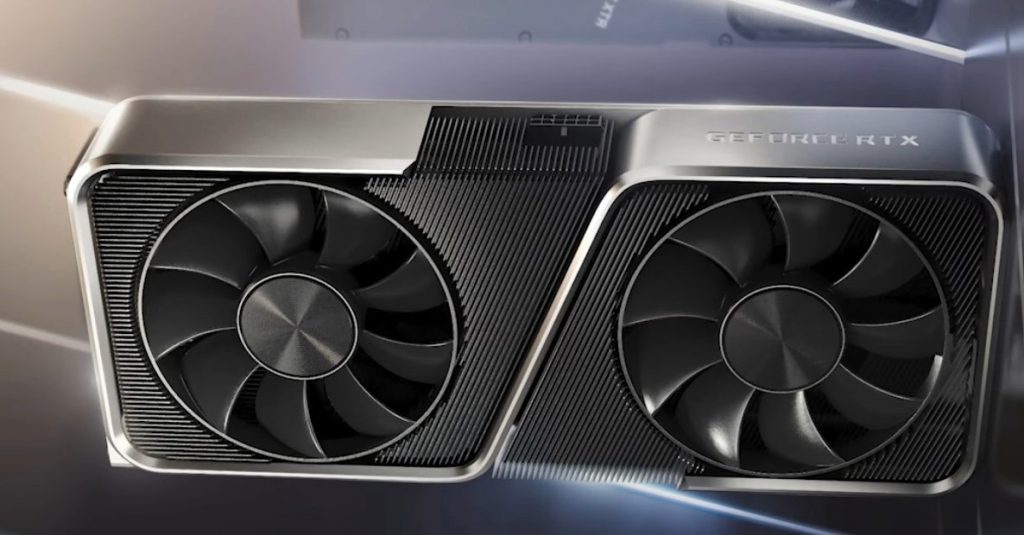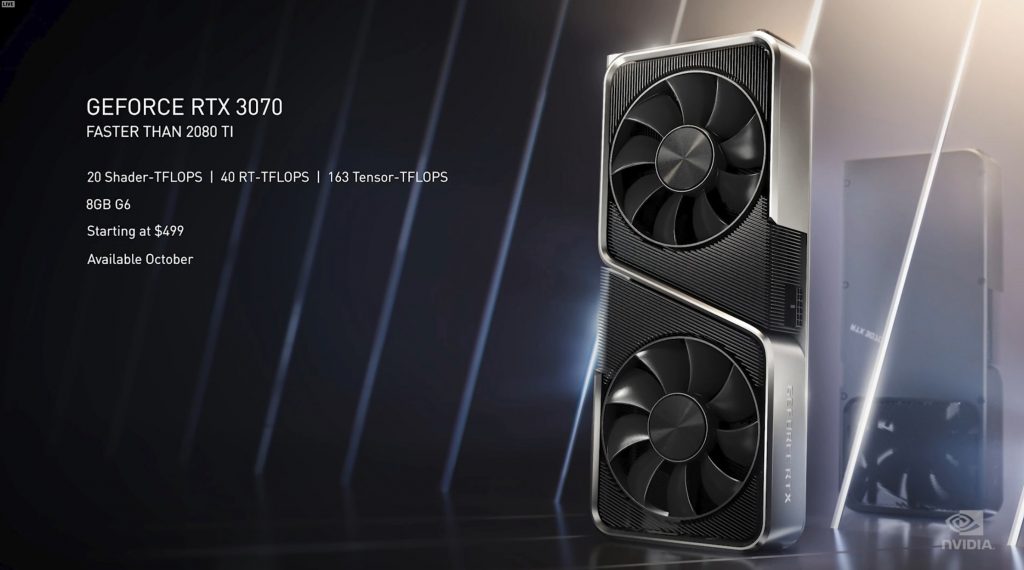Of course, it's easy to speculate why and how NVIDIA is making such a move so soon after its planned launch on 10/15/202020. If the in-house spies have done a good job, NVIDIA could counter with a card that is already physically present and whose design has been adapted to the competitor's product (BIOS, clock rates). This would indirectly confirm where one of the new RDNA2 cards from AMD could be placed in the performance. In addition, one could also speculate on the price, but that would be rather pointless at this stage. The fact that I did not take part in the news battle yesterday had not only reasons of time but also of content.
NVIDIA itself justifies the postponement, almost as expected, with an increase in availability for the end customer. Quote:
Production of GeForce RTX 3070 graphics cards are ramping quickly. We've heard from many of you that there should be more cards available on launch day. To help make that happen, we are updating the availability date to Thursday, October 29th. We know this may be disappointing to those eager to purchase a GeForce RTX 3070 as soon as possible, however this shift will help our global partners get more graphics cards into the hands of gamers on launch day. The GeForce RTX 3070 delivers incredible performance and features, including NVIDIA Reflex and Broadcast, for $499 Across a variety of ray-traced and rasterized DirectX and Vulkan titles, the GeForce RTX 3070 delivers similar or faster performance than the GeForce RTX 2080 Ti (which sold for twice the price) and is on average 60% faster than the original GeForce RTX 2070. via NVIDIA
This reads well at first and should also have an additional positive effect on the satisfaction factor, if the hyped products that are eagerly awaited by the willing buyers are available in an attractive and sufficient quantity. Because there is one thing you must never let out of sight: the currently utopian prices for the GeForce RTX 3080 and RTX 3090 result from a shortage of goods, the laws of market-oriented pricing and thus also the desires of the traders. Because it's not NVIDIA or the board partners who raised the prices, but the dear good trade, whether online dealer or counter business. These are the real winners of the current price spiral, apart from a few crazy people who (want to) do the big trade show on eBay & Co.
So good, so logical. Last-minute information gain with Team Green, presentation-compliant reaction to the competitor on 28.10.2020 and flooding the market with a suitable product before the competitor then gets the whole package on the road himself – this is how marketing could work if everything runs ideally. However, NVIDIA's learning curve should not be underestimated or ignored, as it can be learned from mistakes made with the previous two launches of the GeForce RTX 3080 and RTX 3090.
Do you think that this time you would rather deliberately give yourself a little more time at the last moment? Samsung's 8 nm process, which has hardly been tested in practice, the packaging of the other chips with all its difficulties from forecasting to precise and loss-free manufacturing of the packages (please remember AMD and Vega), the problems with the load peaks due to a somewhat too researched boost, the slight design weaknesses of some board partner solutions as well as power supply protection circuits and a driver which is added in a flash and then removes the most important points of criticism fairly well – you won't be able to reduce all this to just one single point.
In the end, however, the customer will be happy if he can really find a stable product on the shelf and purchase it promptly. If after that the object of purchase still functions stably and to the satisfaction, then all the problems that are (still) to be solved in the background by the companies concerned have been completely forgotten and forgiven. They won't even ask for it anymore. Seen in this light, every bit of time that you give to yourself (and thus to your customers) makes sense and adds value. I don't really like to believe that the sole reduction to availability is the only thing I can do. But no one will ask about it if the launch works out as hoped and intended.
It puts the Red Team under a little bit of pressure again and the stalking will probably go right into the next round. Whether and to what extent AMD will respond to this launch move on 28.10.2020 and whether it will be possible to read something between the lines, that remains to be seen.
What else? The heart of the NVIDIA GeForce RTX 3070 is the GA104 graphics processor, which is based on Samsung's 8 nm node, measures 392.5 mm² and has 17.4 billion transistors, which is still almost 93% of the transistors of a Turing TU102. At the same time, the GA104 is only about half the size of the TU102, which indicates a very high density. For the GeForce RTX 3070, NVIDIA has enabled a total of 46 SM units, resulting in a total of 5888 CUDA cores of new FP32 reads.
In terms of memory, the GeForce RTX 3070 features 8GB of GDDR6 memory at 14Gbps. Combined with a 256-bit untrimmed memory interface, this results in a cumulative bandwidth of 448 Gbps. The NVIDIA GeForce RTX 3070 Founders Edition also operates over a single 12-pin Micro-Fit 3.0 connector.
| GeForce RTX 3060 (Ti) | GeForce RTX 3070 | GeForce RTX 3080 | GeForce RTX 3090 | |
|---|---|---|---|---|
| GPU | GA104-200 | GA104-300 | GA102-200 | GA102-300 |
| Process node | Samsung 8nm | Samsung 8nm | Samsung 8nm | Samsung 8nm |
| The Size | 395.2 mm2 | 395.2 mm2 | 628.4 mm2 | 628.4 mm2 |
| Transistors | 17.4 billion | 17.4 billion | 28 billion | 28 billion |
| CUDA Cores | 4864 | 5888 | 8704 | 10496 |
| TMUs/ROPs | TBA | TBA | 272 / 96 | 328/112 |
| Tensor/RT | 152 / 38 | 184 / 46 | 272 / 68 | 328 / 82 |
| Basic Cycle |
TBA | 1500 MHz | 1440 MHz | 1400 MHz |
| Boost Clock |
TBA | 1730 MHz | 1710 MHz | 1700 MHz |
| FP32 Compute | TBA | 20 TFLOPs | 30 TFLOPs | 36 TFLOPs |
| RT TFLOPs | TBA | 40 TFLOPs | 58 TFLOPs | 69 TFLOPs |
| Tensor-TOPs | TBA | 163 TOPs | 238 TOPs | 285 TOPs |
| Memory | 8 GB GDDR6 | 8 GDDR6 | 10 GB GDDR6X | 24 GB GDDR6X |
| Interface | 256-bit | 256-bit | 320-bit | 384-bit |
| Throughput | 14 Gbps | 14 Gbps | 19 Gbps | 19.5 Gbps |
| Bandwidth | 448 Gbps | 448 Gbps | 760 Gbps | 936 Gbps |
| TGP | 180W? | 220W | 320W | 350W |
| Launch | 11/2020 ? | 29.10.2020 | 17.09.2020 | 24.09.2020 |

































Kommentieren